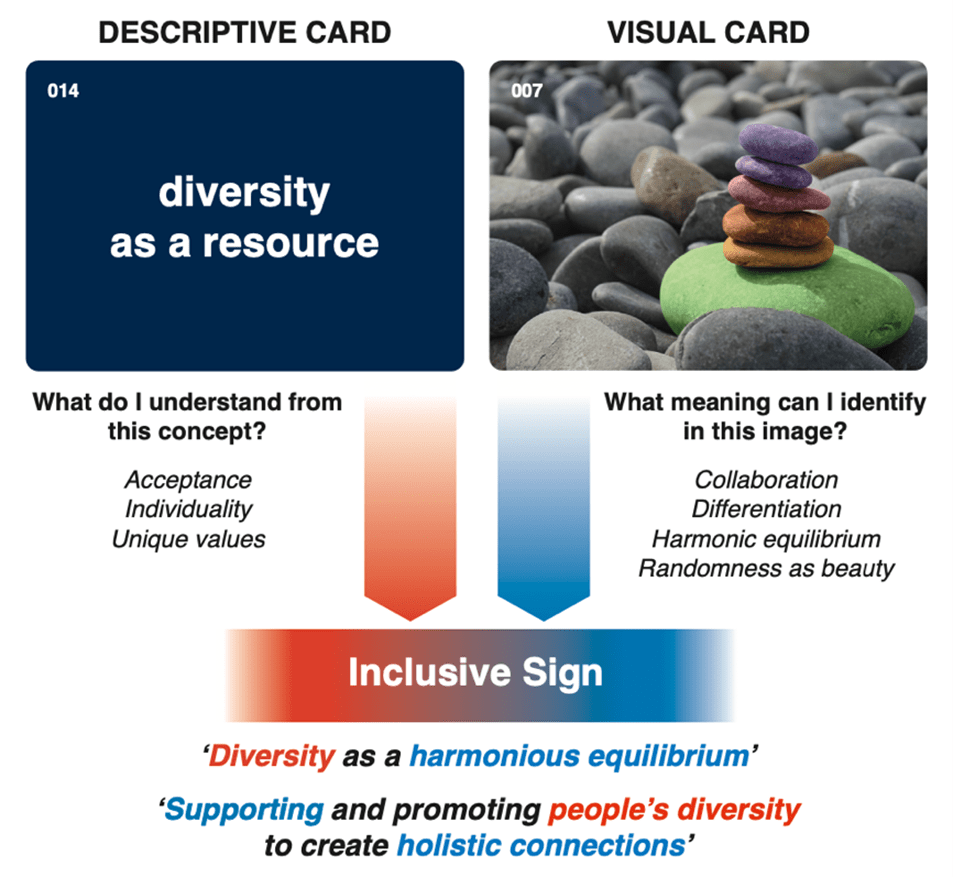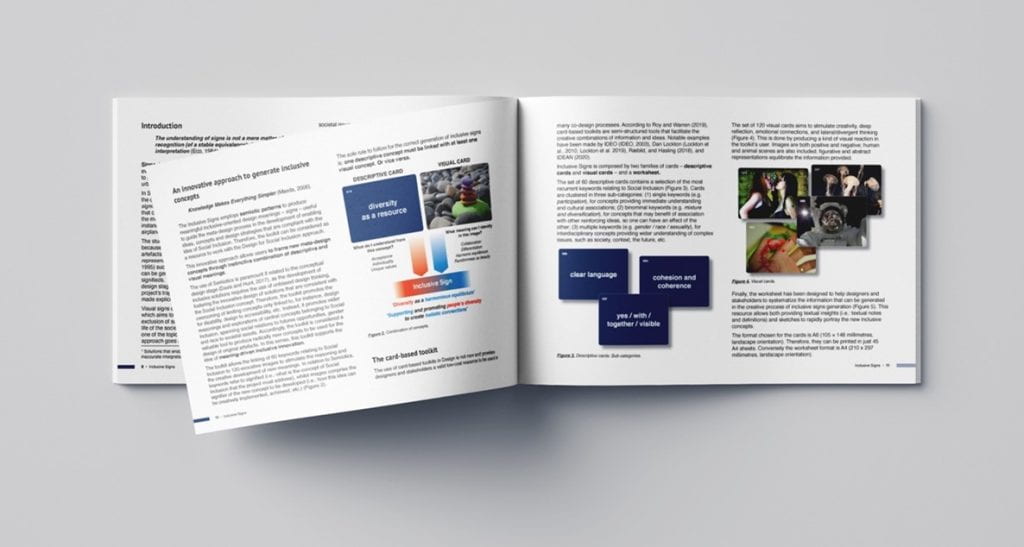Inclusive Signs: A card-based toolkit to generate creative inclusive design concepts and research strategies (blog)

Dr Emilio Rossi – Lincoln School of Design – Senior Lecturer – Staff profile
Introduction
Designers often confuse inclusive design practice, which is an informed practice that foster social inclusion, with the design of accessible artefacts for disabled people. This because social inclusion is a multidimensional concept hard to be tackled by simply using problem solving design skills or cause-effects patterns. For example, inclusive artefacts such as products, services, systems of solutions, etc., should consider real end-users’ needs, living conditions, appropriate enabling technologies, societal trends, and company business. Therefore, the design of inclusive and enabling artefacts, requires new creative processes able to interpret the complexity of social inclusion to propose promising solutions ‘for All’. Can designers and stakeholders generate meaningful design strategies and controlled visions for the future inclusive society that overcome the idea of ‘design for disabled people’? Is it possible to generate creative and innovative meta-design insights for future inclusive projects? Inclusive Signs is an open access card-based toolkit designed to generate creative and inclusive design concepts, meta-design insights and strategies.
Implementation
A set of 180 cards and a worksheet can be used to run creative brainstorming and workshops, as well as to find inspirational trajectories and meaningful values. Inclusive Signs employs semiotic patterns to produce meaningful inclusive-oriented design meanings – inclusive signs precisely. The creation of inclusive signs is operated through instinctive combination of descriptive and visual concepts. Therefore, both designers, stakeholders, and design students can imagine future inclusive scenarios and new generation of enabling solutions in a new way.

The Inclusive Signs toolkit allows the linking of 60 keywords (descriptive cards) relating to social inclusion to 120 evocative images (visual cards) to stimulate the reasoning and the creative development of new meanings. In relation to semiotics, keywords refer to signified (i.e.: what is the concept of social inclusion that the project must address), whilst images comprise the signifier of the new concept to be developed (i.e.: how this idea can be creatively implemented, achieved, etc.).

The toolkit has been designed at the Lincoln School of Design, University of Lincoln, to be a teaching and learning toolkit for all design programmes, but it can be a useful solution usable by designers and a wider audience to generate controlled design ideas and meaningful visions for a future inclusive society. The goal is to stimulate deep reflections on using social inclusion as a learning ground through which to improve, holistically, all design processes.
The Inclusive Signs toolkit has been validated through several trials performed in United Kingdom and Italy with students. This process provided scientific generalization of results and confirmation of the approach used to generate inclusive signs.
Outcomes and benefits
The toolkit is an inclusive resource available in three languages – English, Italian, Chinese – and allows everybody to creatively generate inclusive meta-design insights to be used for creating any enabling solution. Accordingly, Inclusive Signs is a toolkit primarily conceived for designers. However, stakeholders can intuitively use the toolkit to produce useful ideas that later can be used by designers in participative design processes.

The toolkit has been experimentally used by Year 3 Product Design students in the Negotiated Project joint module. Students found the toolkit intuitive and easy to use, a creative resource able to feed the concept design stage with interesting interpretations and stimuli to go beyond the idea of ‘designing for disabled people’.
Resources
Website
Handbooks
- Rossi, E. (2022) Inclusive Signs: A card-based toolkit to generate creative inclusive design concepts and research strategies. University of Lincoln, Lincoln. ISBN 978-1-86050-264-4.
- Rossi, E. (2022) Segni Inclusivi: Un toolkit basato su carte per generare concept progettuali e strategie di ricerca creative e inclusive. University of Lincoln, Lincoln. ISBN 978-1-86050-266-8 (Italian version).
- Rossi, E. (2022) 包容性标志:基于卡片的工具包,用于生成创造性的包容性设计概念和研究策略。University of Lincoln, Lincoln。ISBN 978-1-86050-268-2 (Chinese version).
180 cards
- Rossi, E. (2022) Inclusive Signs: Descriptive Cards and Visual Cards. Lincoln: University of Lincoln. ISBN: 978-1-86050-265-1.
- Rossi, E. (2022) Segni Inclusivi: Carte Descrittive e Carte Visive. Lincoln: University of Lincoln. ISBN 978-1-86050-267-5 (Italian version).
- Rossi, E. (2022) I包容性标志 描述性卡片和视觉卡片。Lincoln: University of Lincoln。ISBN: 978-1-86050-269-9 (Chinese version).
Link to University of Lincoln Library